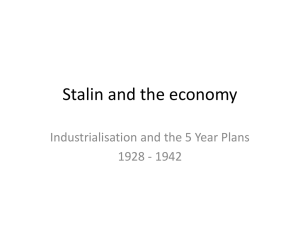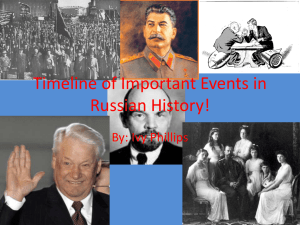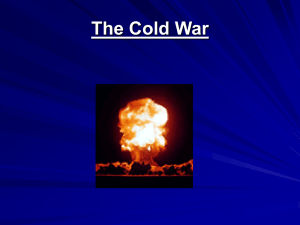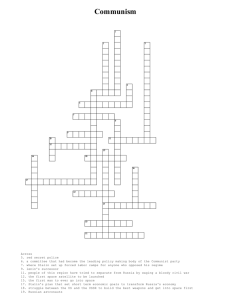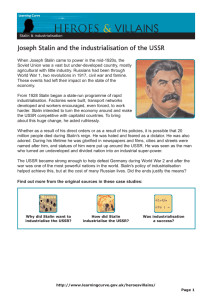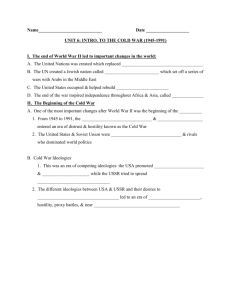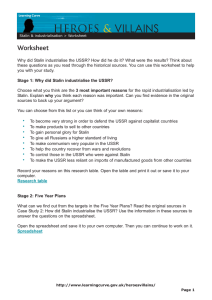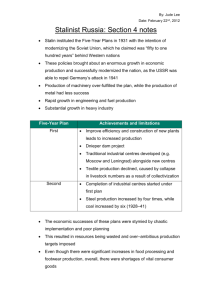MODEL ANSWERS ON DEPTH STUDY B RUSSIA, 1905
advertisement
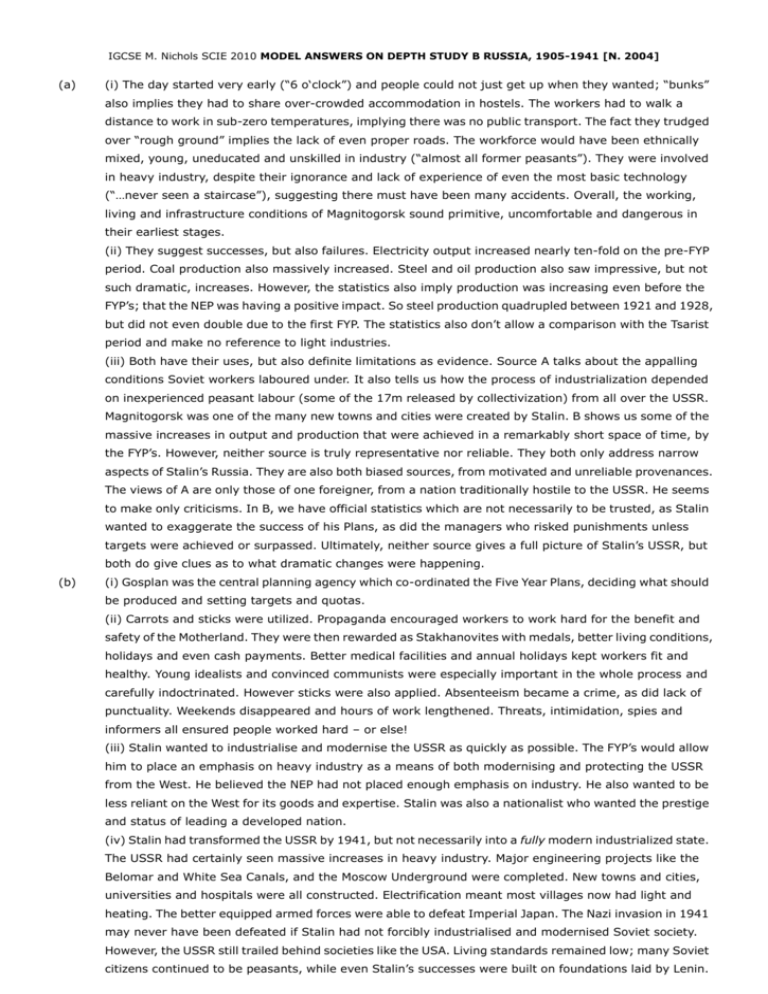
IGCSE M. Nichols SCIE 2010 MODEL ANSWERS ON DEPTH STUDY B RUSSIA, 1905-1941 [N. 2004] (a) (i) The day started very early (“6 o‘clock”) and people could not just get up when they wanted; “bunks” also implies they had to share over-crowded accommodation in hostels. The workers had to walk a distance to work in sub-zero temperatures, implying there was no public transport. The fact they trudged over “rough ground” implies the lack of even proper roads. The workforce would have been ethnically mixed, young, uneducated and unskilled in industry (“almost all former peasants”). They were involved in heavy industry, despite their ignorance and lack of experience of even the most basic technology (“…never seen a staircase”), suggesting there must have been many accidents. Overall, the working, living and infrastructure conditions of Magnitogorsk sound primitive, uncomfortable and dangerous in their earliest stages. (ii) They suggest successes, but also failures. Electricity output increased nearly ten-fold on the pre-FYP period. Coal production also massively increased. Steel and oil production also saw impressive, but not such dramatic, increases. However, the statistics also imply production was increasing even before the FYP’s; that the NEP was having a positive impact. So steel production quadrupled between 1921 and 1928, but did not even double due to the first FYP. The statistics also don’t allow a comparison with the Tsarist period and make no reference to light industries. (iii) Both have their uses, but also definite limitations as evidence. Source A talks about the appalling conditions Soviet workers laboured under. It also tells us how the process of industrialization depended on inexperienced peasant labour (some of the 17m released by collectivization) from all over the USSR. Magnitogorsk was one of the many new towns and cities were created by Stalin. B shows us some of the massive increases in output and production that were achieved in a remarkably short space of time, by the FYP’s. However, neither source is truly representative nor reliable. They both only address narrow aspects of Stalin’s Russia. They are also both biased sources, from motivated and unreliable provenances. The views of A are only those of one foreigner, from a nation traditionally hostile to the USSR. He seems to make only criticisms. In B, we have official statistics which are not necessarily to be trusted, as Stalin wanted to exaggerate the success of his Plans, as did the managers who risked punishments unless targets were achieved or surpassed. Ultimately, neither source gives a full picture of Stalin’s USSR, but both do give clues as to what dramatic changes were happening. (b) (i) Gosplan was the central planning agency which co-ordinated the Five Year Plans, deciding what should be produced and setting targets and quotas. (ii) Carrots and sticks were utilized. Propaganda encouraged workers to work hard for the benefit and safety of the Motherland. They were then rewarded as Stakhanovites with medals, better living conditions, holidays and even cash payments. Better medical facilities and annual holidays kept workers fit and healthy. Young idealists and convinced communists were especially important in the whole process and carefully indoctrinated. However sticks were also applied. Absenteeism became a crime, as did lack of punctuality. Weekends disappeared and hours of work lengthened. Threats, intimidation, spies and informers all ensured people worked hard – or else! (iii) Stalin wanted to industrialise and modernise the USSR as quickly as possible. The FYP’s would allow him to place an emphasis on heavy industry as a means of both modernising and protecting the USSR from the West. He believed the NEP had not placed enough emphasis on industry. He also wanted to be less reliant on the West for its goods and expertise. Stalin was also a nationalist who wanted the prestige and status of leading a developed nation. (iv) Stalin had transformed the USSR by 1941, but not necessarily into a fully modern industrialized state. The USSR had certainly seen massive increases in heavy industry. Major engineering projects like the Belomar and White Sea Canals, and the Moscow Underground were completed. New towns and cities, universities and hospitals were all constructed. Electrification meant most villages now had light and heating. The better equipped armed forces were able to defeat Imperial Japan. The Nazi invasion in 1941 may never have been defeated if Stalin had not forcibly industrialised and modernised Soviet society. However, the USSR still trailed behind societies like the USA. Living standards remained low; many Soviet citizens continued to be peasants, while even Stalin’s successes were built on foundations laid by Lenin.
